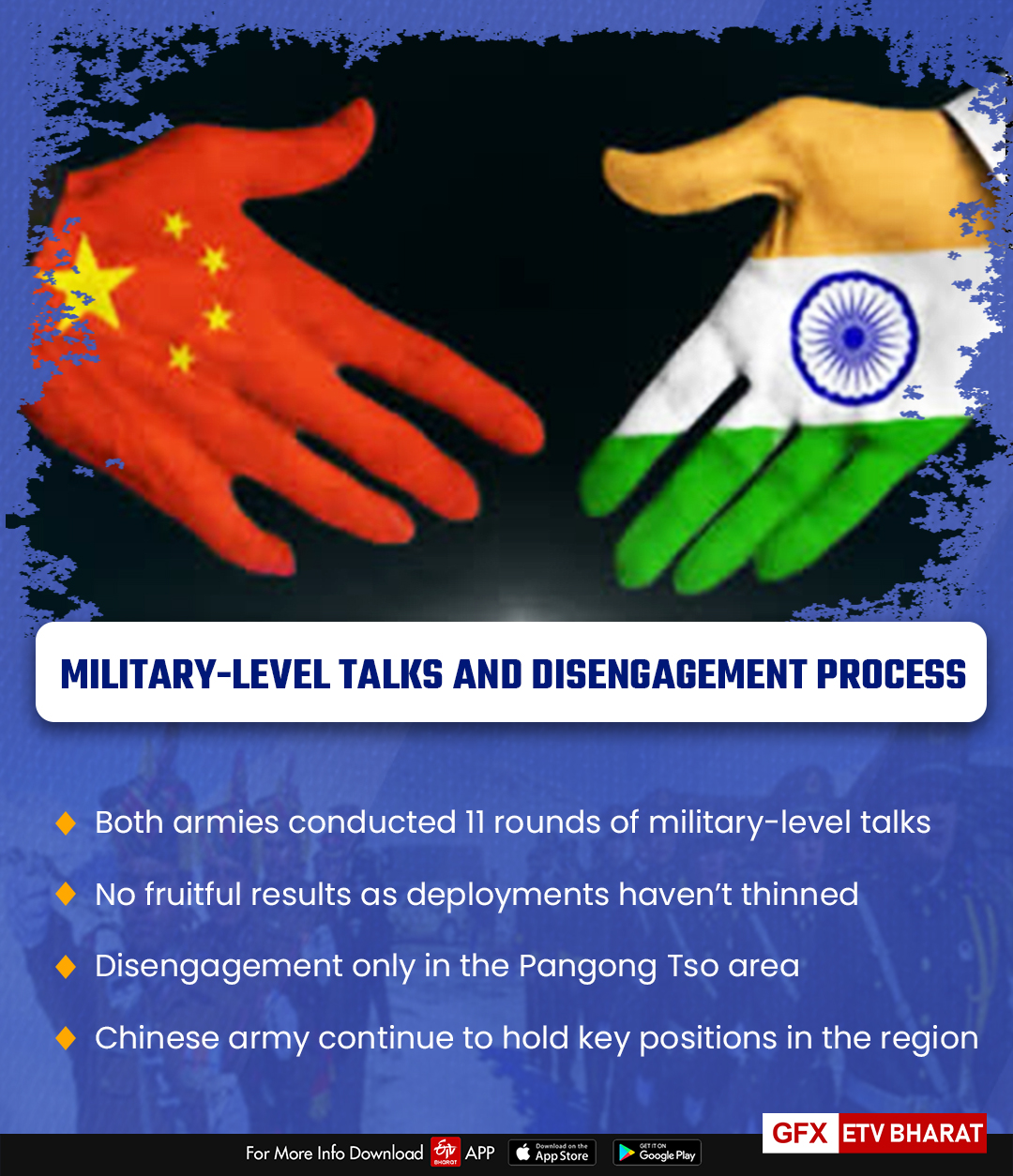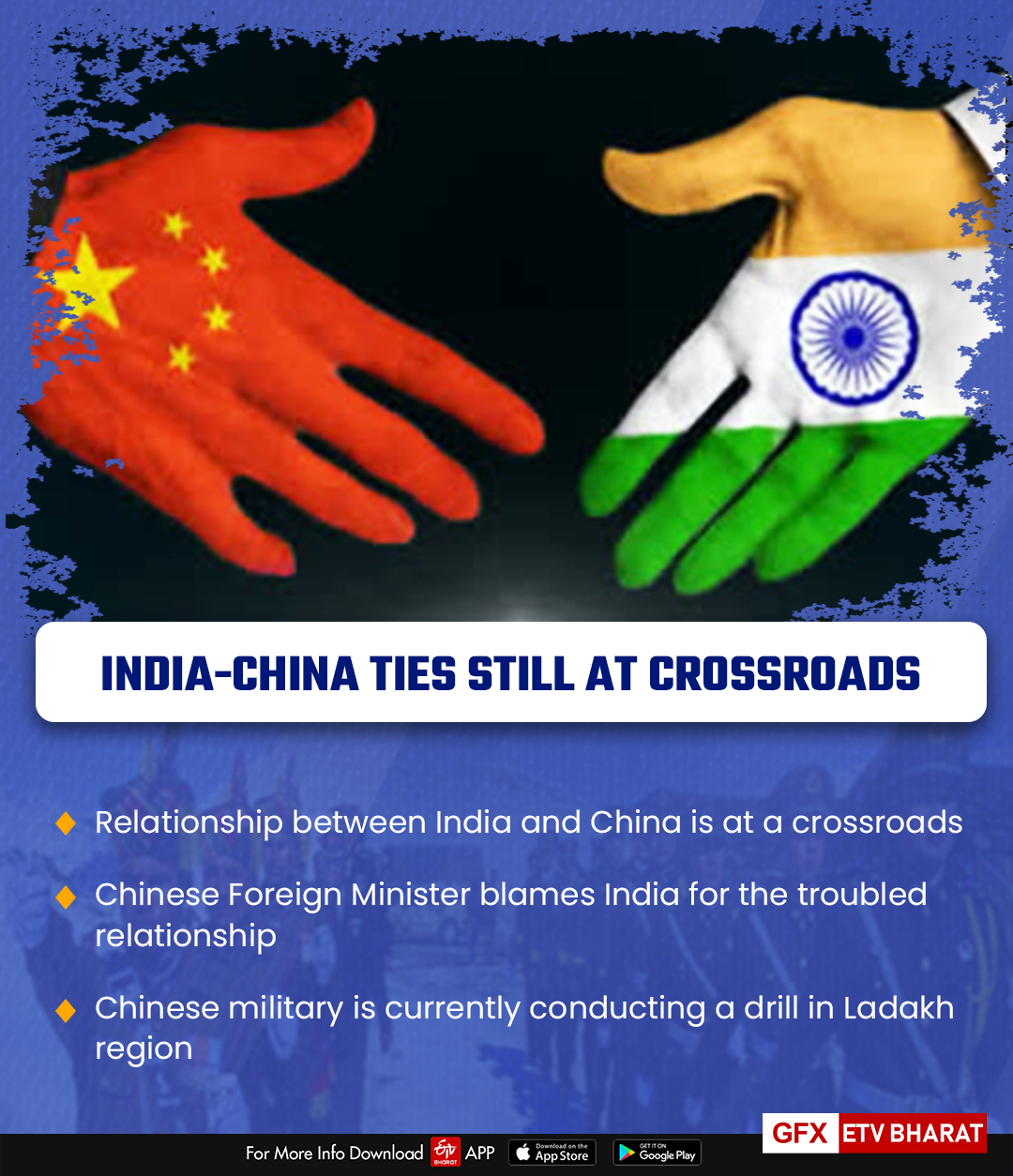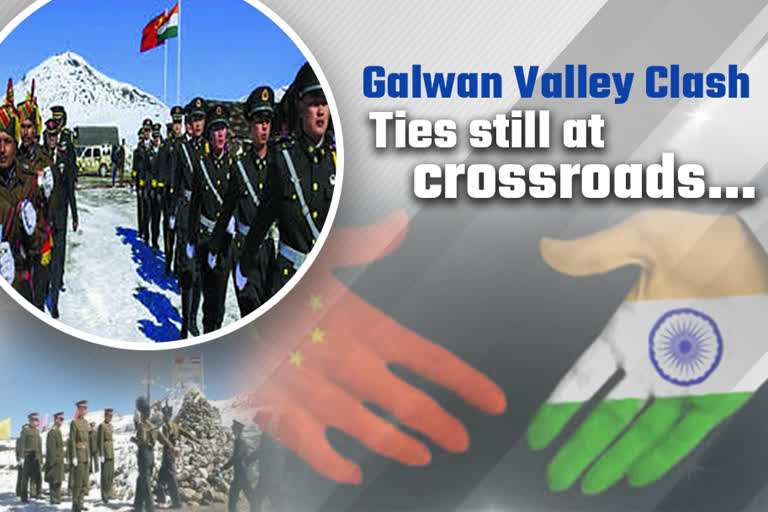Hyderabad: It has been almost a year since the first major clash between Indian and Chinese troops, at Finger 4 of the Pangong Tso lake in Eastern Ladakh, which then led to the worst-ever tensions between both sides. At least twenty Indian Army personnel, including a commanding officer (CO), were killed in a fierce clash with Chinese troops in the Galwan Valley in eastern Ladakh on the night of June 15, 2020.
The biggest military confrontation in over five decades that has significantly escalated the already volatile border standoff in the region. Since the unfortunate incident, India and China held a series of meetings at the military and diplomatic levels where National Security Advisors, Defence Ministers and Foreign Ministers held talks. Even after reaching a five-point consensus by both the nations the situation on the ground especially in eastern Ladakh is at razor's edge.
WHAT LED TO THE GALWAN VALLEY CLASH

The stand-off along the Sino-Indian border started on 5 May when Indian and Chinese soldiers clashed at Pangong Tso lake through which the LAC passes. The Indian and Chinese portions of the lake are not mutually agreed upon. Since then, China was seen increasing its presence along the LAC. As per reports, the Chinese had constructed over 100 tents in Ladakh as the pitching of tents along the LAC has been their old pattern.
Read: Keep border issue at appropriate position, focus on long term ties: China tells India
As per media reports, a small troop of the Indian border patrol party had gone down to Galwan Valley, at 15,000 feet, to remove a Chinese tent that was pitched there where a physical fight broke out after the Chinese side attacked the patrol party led by Colonel B Santosh Babu of the Bihar Regiment. They were attacked with batons and rods fitted with nails which led to the killings of Colonel Babu and 20 other soldiers.
MILITARY-LEVEL TALKS AND DISENGAGEMENT PROCESS

The Indian Army and the Chinese People’s Liberation Army (PLA) have held 11 rounds of talks between corps commander-ranked officers since June 6, 2020, to reduce tensions along the disputed border. The eleventh round of talks resulted in a damp squib despite the talks extending to about 13 hours. The points of discussion related to disengagement in Gogra, Hot Springs and Demchok did not see progress.
Read: PLA exercising in its depth areas opposite Ladakh, Indian forces watching closely
The only significant outcome of the military dialogue has been the disengagement of front-line troops and weaponry in the Pangong Tso sector in mid-February. Both armies have hundreds of troops in Ladakh and the deployments haven’t thinned after the disengagement in the Pangong Tso sector.
The corps commanders' meetings have had mixed results as those talks were successful in negotiating the disengagement in the Pangong Tso area but there has been no further progress. The disengagement process was on paper but it was never really followed by the Chinese as they continue to hold key positions in the region.
LADAKH DISENGAGEMENT AND THE CHINESE 1959 CLAIM LINE
According to Retired Lt General HS Panag, the disengagement is happening exactly as per China's 1959 claim line because India has no military capability to alter the situation. What is the Chinese 1959 claim line on LAC? The Chinese premier, in his letter dated November 7, 1959, first proposed the Chinese 1959 claim line. The Chinese claim line of 1959 originated with the 1914 Simla Convention, which demarcated McMahon Line that separated Tibet from India.
The Chinese never raised any formal opposition to the McMahon Line since the agreement of the Simla Convention on 3 July 1914 until January 1959. It was first contested in a letter written by Zhou Enlai, the first premier and head of government of the People's Republic of China to then Prime Minister Jawaharlal Nehru.
In 1959, Chinese premier Zhou Enlai in a letter to PM Jawaharlal Nehru proposed that the forces of the two countries should withdraw 20 km from the "Mc Mohan Line in the east and from the line up to which each other sides exercises actual control in the West." In 1993, the term LAC was used in the India-China agreement on the maintenance of peace and tranquillity in the India-China border areas. But India insisted that the phrase should not be defined as per China's 1959 claim.
CAPTURING HEIGHTS AT KAILASH RANGE BY INDIAN TROOPS LED TO DISENGAGEMENTS
Following the clash at the Galwan valley, the decision to occupy heights on the Kailash Range was taken by the China Study Group, the apex body on China-related decisions, towards the end of August.
The final decision for the same was made on August 29 and troops started moving the same day.
Thereafter, on the intervening night of August 29-30, the Indian Army captured strategically important heights on the Kailash Range. This move by the Indian troops not only put the PLA at a disadvantageous position for the first time since the start of the conflict along the Line of Actual Control but also led to the disengagement of troops and armoured columns on the north and south banks of Pangong Tso as well as the Kailash range this February.
INDIA-CHINA TIES STILL AT CROSSROADS

The relationship between India and China is at a crossroads and its direction depends on whether the neighbouring country adheres to various agreements on maintaining peace and tranquillity along the border, External Affairs Minister S Jaishankar said on Thursday.
The stability at the border led to the expansion of relations in several sectors, but it was adversely impacted following what happened in eastern Ladakh, he said. He also said it is definitely going to impact the ties if the peace and tranquillity at the border are disturbed.
On the other hand, Chinese Foreign Minister Wang Yi has laid the blame for the troubled relationship between the two countries at India's door. The Chinese military is currently conducting a drill in its training areas near the Ladakh region. Sources in the defence and security establishment said that while there has been some positive development in terms of disengagement, the road ahead is very long.



